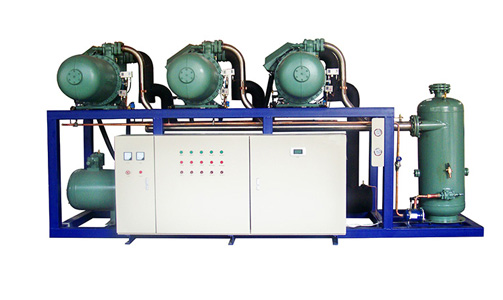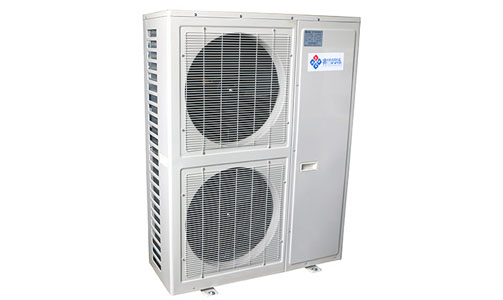A water-cooled chiller is a type of chiller from which heat is removed to cool water used in a project or industrial or domestic structure, and which puts the water back into the operating cycle. In effect, the chiller is transferring heat from one space that needs temperature control to another. The chiller is therefore not a means of generating cold, but a means of dissipating heat, its task being to facilitate the transfer of unwanted and undesired heat caused by the activity to a place outside the system.
Cooling towers are specifically designed for water-cooled chillers. This is because the condenser of a water-cooled chiller uses water as stimulant and coolant. The efficiency of a water-cooled chiller is increased because the wet surface is more successful in transferring heat and can work in compression even at wetter bubble temperatures.
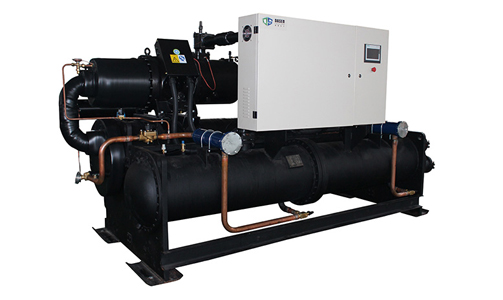
Water-Cooled Screw Chiller
How do water-cooled chillers work?
The water cooled chiller cycle, like any other chiller, consists of four main components: the evaporator, the compressor, the condenser and the expansion valve, each of which undergoes a thermodynamic process. The chiller works by delivering refrigerant at different pressures and temperatures to the different phases of the material to cool the water, which is then pumped out of the chiller. In fact, the main work of a chiller is based on the phase change or physical state of the refrigerant or refrigerant. Meanwhile, the work of a water-cooled chiller is based on the condensation of a vapour or gas.
First step in chiller operation.
The starting point of this cycle is where the water from the production process enters the evaporator into the chiller cycle.
In this part of the cycle, the heat absorbed by the refrigerant first manifests itself in the form of a change from the liquid to the gas phase. As the refrigerant absorbs heat from the water, the ambient temperature in contact with this part drops, so the water leaves at a lower temperature. This water enters the fan coil and brings the cool air to the desired space.
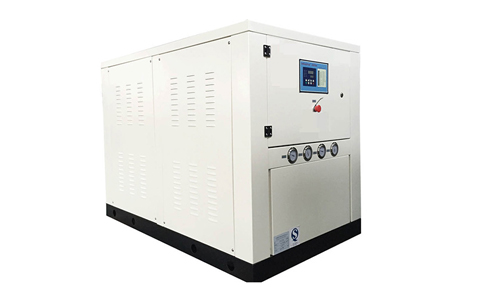
Box Type Water-cooled Chiller
In fact, the evaporator is where another cycle is involved in addition to the current one and that cycle is between the evaporator and the outlet of the cooling unit. In effect, the hot water enters the chiller evaporator, which then cools it and pumps it to the desired location throughout the building.
Second stage.
The gaseous refrigerant, which has reached the gaseous phase before the liquid state, then enters the compressor. In the compressor, the gas condenses and the temperature and pressure increase, thus moving to the next high pressure stage. The increase in pressure and temperature as the refrigerant leaves the compressor is important because the refrigerant needs to release heat from inside the condenser and it must therefore carry enough heat to the condenser.
Another key function of the compressor is to draw the refrigerant into the evaporator at the right time so that the pressure inside the evaporator remains high enough to absorb the heat again.
Third stage.
The third step takes place inside the condenser. The high temperature gas enters the condenser. In the condenser, the gaseous refrigerant is converted into a saturated, high-pressure liquid. This is a constant pressure process.
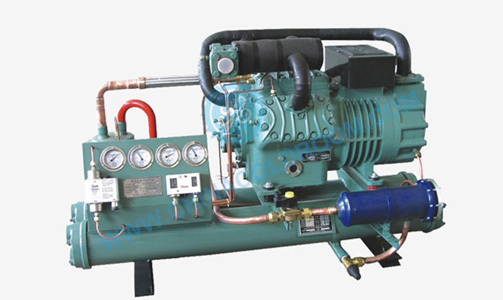
GEA BOCK Low Temperature Water Cooled Condensing Unit (-35~-25℃)
On the other hand, the water enters the cooling tower after the temperature has risen because the condenser exists in another cycle between the cooling towers. Since the main task of the cooling tower in a water-cooled chiller is to cool the water consumed, the condenser uses this water as its drive material.
This is where the excess heat from the water disappears and the water temperature returns to the required low temperature. The heating process we mentioned earlier takes place in the condenser to release the heat of the gaseous refrigerant itself, which is the source of heat that now needs to be eliminated by the cooling tower. In this way, the water entering the chiller cooling tower from the condenser comes into contact with the gas stream and transfers its heat to the air, which then returns to the condenser.
Fourth and final step.
The expansion valve is the final stage through which the refrigerant passes. This milk, as the name implies, expands and reduces the refrigerant. These processes take place with the refrigerant in the expansion valve, resulting in the refrigerant becoming a mixture of liquid and gas. Eventually, the same compound re-enters the evaporator to resume the cycle and the hot water re-enters the evaporator from the other direction.
Our innovative chiller solutions are designed to provide efficient, reliable cooling for all types of large commercial applications.
We always provide series of products for the solution of cold storage, water-chilling and ice-making with the best quality to maintain OEM-QUALITY standards. Welcome to contact us.




